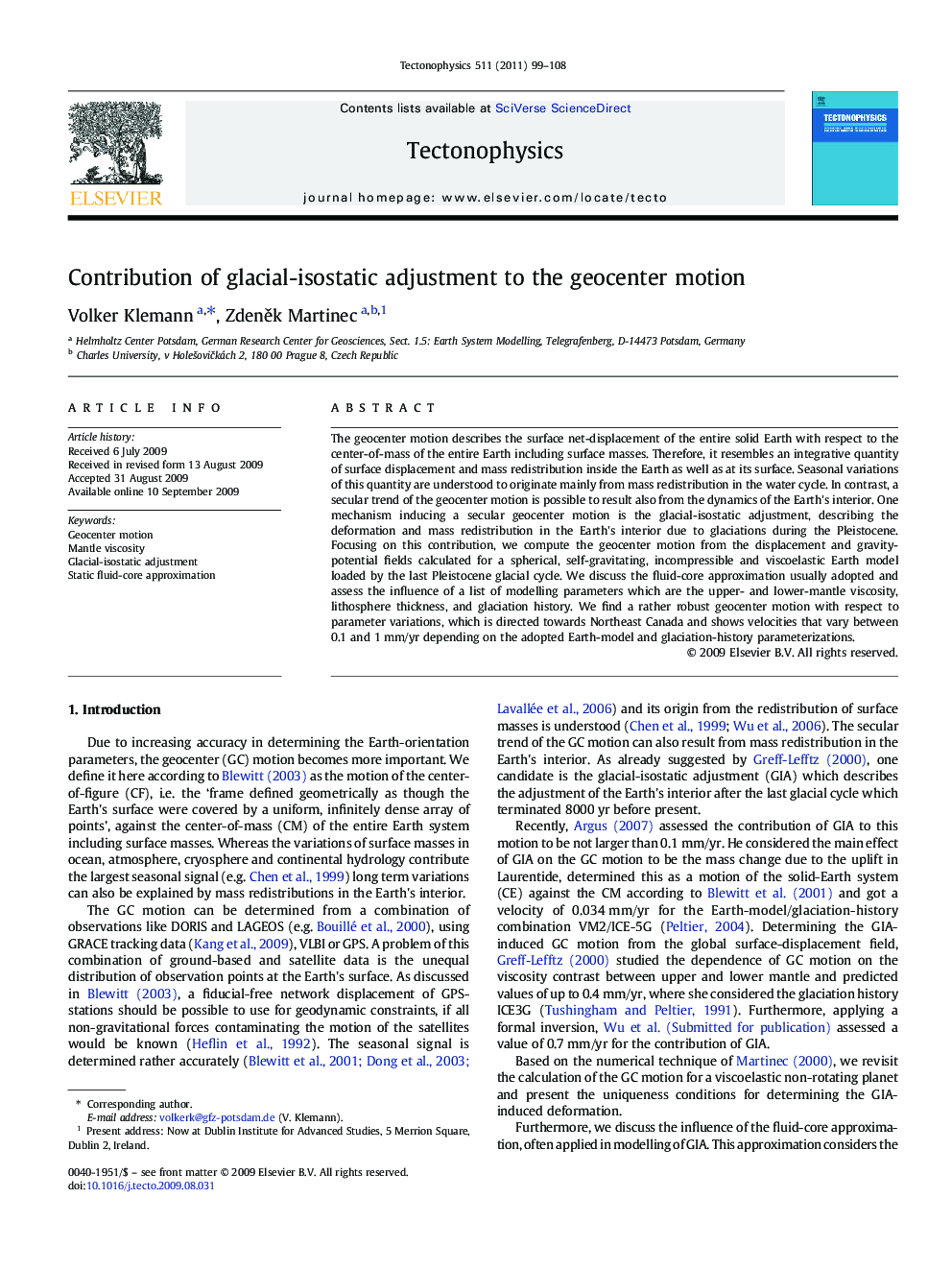| Article ID | Journal | Published Year | Pages | File Type |
|---|---|---|---|---|
| 4692977 | Tectonophysics | 2011 | 10 Pages |
The geocenter motion describes the surface net-displacement of the entire solid Earth with respect to the center-of-mass of the entire Earth including surface masses. Therefore, it resembles an integrative quantity of surface displacement and mass redistribution inside the Earth as well as at its surface. Seasonal variations of this quantity are understood to originate mainly from mass redistribution in the water cycle. In contrast, a secular trend of the geocenter motion is possible to result also from the dynamics of the Earth's interior. One mechanism inducing a secular geocenter motion is the glacial-isostatic adjustment, describing the deformation and mass redistribution in the Earth's interior due to glaciations during the Pleistocene. Focusing on this contribution, we compute the geocenter motion from the displacement and gravity-potential fields calculated for a spherical, self-gravitating, incompressible and viscoelastic Earth model loaded by the last Pleistocene glacial cycle. We discuss the fluid-core approximation usually adopted and assess the influence of a list of modelling parameters which are the upper- and lower-mantle viscosity, lithosphere thickness, and glaciation history. We find a rather robust geocenter motion with respect to parameter variations, which is directed towards Northeast Canada and shows velocities that vary between 0.1 and 1 mm/yr depending on the adopted Earth-model and glaciation-history parameterizations.
